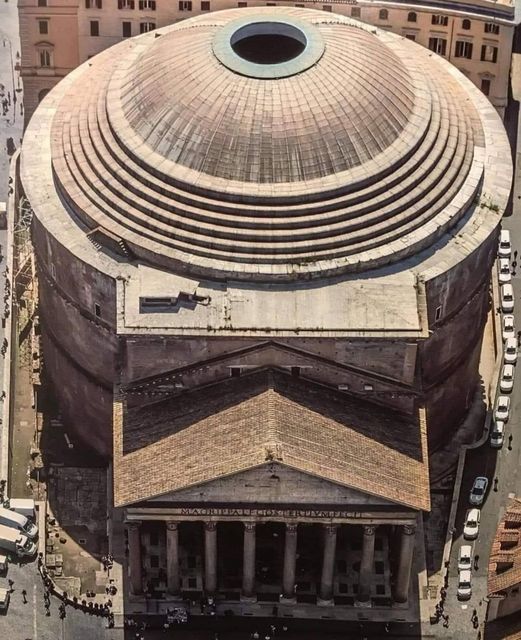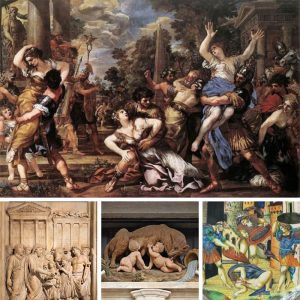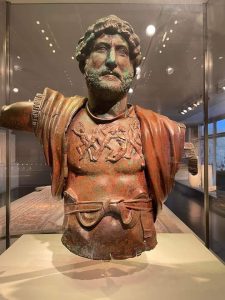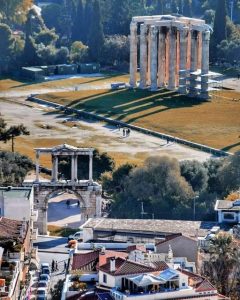The Pantheon in Rome, standing as a pinnacle of ancient architecture and engineering, marks its impressive legacy as one of the best-preserved buildings from ancient Rome. Constructed during the reign of Emperor Hadrian around 126 AD, this architectural marvel is renowned not only for its historical significance and beauty but also for its record-breaking dome — the largest unreinforced concrete dome in the world.

The photograph captures the grandeur of the Pantheon from an aerial view, offering a unique perspective on its massive dome and the elegant portico that fronts this ancient temple. The structure was originally built as a temple dedicated to all (pan) the gods (theon) of ancient Rome, a purpose that is reflected in its name and grandiosity.
One of the most remarkable aspects of the Pantheon is its dome. With a diameter of 43.3 meters (142 feet), it was an architectural triumph that has not been surpassed in more than 1900 years. The dome’s design is not only a wonder in terms of size but also in terms of engineering. The ceiling features a series of sunken panels, or coffers, which not only reduce the weight of the roof but also add a decorative element that plays with light and shadow.
Central to the dome is the oculus, an 8.8-meter (29-foot) opening at the very top that serves as the only source of natural light. The oculus not only illuminates the Pantheon’s interior but also adds to the building’s symbolism, creating a connection between the temple and the heavens above. During rainstorms, a drainage system below the floor efficiently handles the water that pours in through the oculus, showcasing the Romans’ advanced understanding of civil engineering.
The construction of the Pantheon’s dome utilized a mixture of concrete and lightweight pumice, making it lighter towards the top. This technique, revolutionary at the time, was critical in preventing the dome from collapsing under its own weight. The walls at the base of the dome are significantly thicker to handle the immense pressure, gradually thinning as they ascend towards the oculus.
Today, the Pantheon not only stands as a monument of the architectural and engineering prowess of ancient Rome but also as a functioning church, drawing tourists and pilgrims alike. Its enduring beauty and structural integrity are a testament to the ingenuity of its architects and the sophistication of Roman construction techniques.
The Pantheon’s influence on Western architecture is immeasurable, inspiring countless buildings throughout history. From its majestic dome to the striking portico that fronts it, the Pantheon remains a timeless beacon of ancient Rome’s ambition and technological achievement.








